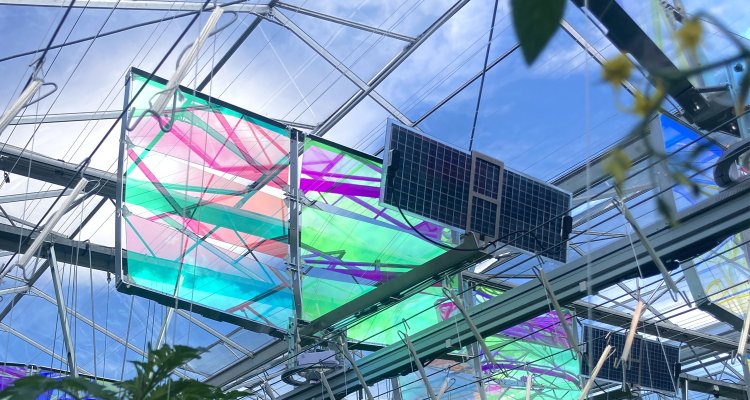
News
Viability of semi-transparent solar panels on greenhouses is being evaluated
The energy market is in full swing. Energy prices are rising and there is a transition from fossil fuels to alternative energy sources with a focus on electricity. For this reason large areas covered with solar panels have been increasingly constructed across the country in recent years. Could those panels also be placed on greenhouse roofs? This question is regularly asked to the Greenhouse Horticulture and Flower Bulbs Business Unit of Wageningen University & Research. Because that might mean an additional source of income for growers.
Greenhouses offer plenty of space for solar panels: they are often many hectares in size and they are also sturdy constructions. Installing panels is therefore technically possible., but an important disadvantage of the panels is that they intercept sunlight. A rule of thumb for growers is: 1% less light means 1% less crop production. The question is whether the production loss can be compensated by production ofelectricity.
Research center Vertify, Wageningen UR Greenhouse Horticulture and TNO are currently investigating the effect of transparent solar panels on greenhouses. Assumings that a certain percentage of the greenhouse roof is covered with solar cells, so certainly not the dark greenhouses which have been build recently at some locations.
It is about the combination of profitable crop cultivation with electricity production. But because both crops and solar cells compete for the available sunlight, it is expected that these panels will not produce enough power to compensate for the loss of crop production. This applies in particular to vegetable crops, where sunlight is a crucial production factor. Of course this depends largely on (future) electricity and product prices. The research is funded by ”Kas als Energiebron”, the innovation programme for the greenhouse horticulture sector.
Previously WUR has conducted research projects into CPV (Concentrated Photovoltaics), where light is focused on much smaller solar cells. This can be achieved in many ways and currently the Swiss company Voltiris is conducting an experiment at WUR Bleiswijk where spectral filters are used to allow the grow light spectrum to pass through to the crop while converting the remaining radiation into sustainable energy. This way, energy is generated without affecting the crop.